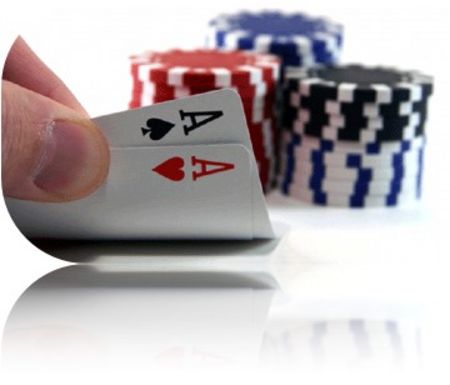Type of Opponents

Advanced players try to play more hands against weak opponents and less hands
against strong opponents. Borderline hands are sometimes profitable against weak
opponents, yet unprofitable against good opponents. Weak opponents make more
mistakes after the flop, which means more profits for you.
For example, if there is a maniac who keeps raising every hand and you hold AT in
late position, you might reraise with this hand to try and isolate yourself against this
opponent. However, if the player who raised is a solid player, you would probably
fold AT, as this hand does not play very well against a good player who is selective
in the hands he raises.
Table Image
Your table image and that of your opponents can change how you play particular
hands. For example, a tight table image may allow you to steal the blinds more
often with some borderline hands. In addition, you might play a few more starting
hands to take advantage of your tight image after the flop to steal a few pots with
bluffs and semi-bluffs. On the other hand, players with a loose image will be less
successful stealing the blinds so they should tend to raise less often preflop with
borderline hands.
The table image of your opponents is also very important. You should play more
hands against loose players and fewer hands against tight players. This is
especially true when a tight player has raised. On the other hand, you might try to
steal the blinds a little more often if there is a tight player in the blinds.
Table image is much more important in tight aggressive games that you see in the
higher limits than in loose low-limit games. Generally there is a showdown in low-
limit games so image is not very important.
Another important concept relates back to the advanced concept we discussed in
the
Introduction to Internet Poker: table image is not as important online
as in a live poker game. We'll discuss this more in the
"Starting Hands - Advanced
Concepts"Strength of Your Own Play

The number of hands you play should also be dependent on how good a poker
player you are. Advanced players are able to overcome the weakness of some
starting hands by using their excellent post-flop skills to outplay their opponents.
They make better decisions on the flop, turn, and river to minimize losses with weak
hands and maximize their wins. This allows them to be able to play more hands
profitably than the beginning player. Most beginning to intermediate players should
play a very tight game until you gain more experience.
Now that we know the main criteria used in evaluating strategies for starting hand
play, let's get more specific and look at what hands are playable in each position.
The first chapter on starting hands is for beginning to intermediate players and
shows a simple winning strategy based on tight play. The second chapter is for
advanced players and discusses some other factors that may allow you to play
more hands in certain situations.
Review
Criteria for starting hand play include:
Strength of Starting Cards
- Winning players play mostly strong hands while losing players play
both strong and weak hands.
- It is important to play only the quality hands from each position
Position
- Position is important because it determines how much information you
have about how the hand is developing
- There are many situations where your position can help you save or
gain bets or even win the whole pot.
- You can play more hands in late position than early position since
each particular starting hand has a higher expectation.
Number of Callers
- Small and medium pairs and suited connectors play best will many
opponents, while high unsuited cards play best against on one or two opponents.
Type of Game (Loose/Tight, Passive/Aggressive)
- The type of game gives you an indication of how many players will see
the flop and whether or not the pot might be raised.
- Advanced players use these criteria to play a few more hands from
early or middle position if the conditions are right.
Raised/Unraised Pot
- Many players fail to understand that many hands become unplayable
when the pot has been raised.
- A raise indicates that your opponent has a strong hand and also
lowers your pot odds.
Type of Opponents
-
Advanced players try to play more hands against weak opponents and
fewer hands against strong opponents.
Table Image
-
Your table image and that of your opponents can change how you
play particular hands.
-
Table image is much more important in tight aggressive games that
you see in the higher limits than in loose low-limit games.
-
Table image is not as important online as in a live game.
Strength of Your Own Play
-
The number of hands you play should also be dependent on how good
a poker player you are.
NEXT...Beginning end Intermediate Players

